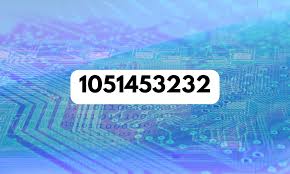Numbers are everywhere in our lives, from the time on the clock to the statistics that shape our understanding of the world. Among these countless numbers, some catch our attention due to their unique properties or significance. One such number is 1,051,453,232. While it may seem like just a random large number, a deeper exploration reveals interesting facets.
Breaking Down 1,051,453,232
At first glance, 1,051,453,232 is simply a nine-digit integer, but there’s more to it than meets the eye.
Even and Divisible
1,051,453,232 is an even number, meaning it’s divisible by 2. This basic property gives us the starting point to explore its divisibility further. It’s also divisible by several other numbers, particularly those that are powers of 2, like 4, 8, and 16.
Prime Factorization
The prime factorization of 1,051,453,232 is 24×656, 908272^4 \times 656, 90827×656, 90827. This breakdown into prime numbers shows that it can be represented as the product of smaller, more fundamental numbers, revealing the structure beneath the surface.
Digital Sum
The digital sum of 1,051,453,232, calculated by adding its digits together (1+0+5+1+4+5+3+2+3+2), is 26. This sum doesn’t hold special significance by itself, but it’s a part of the number’s identity in the broader context of numerology and number theory.
Applications in the Real World
Large numbers like 1,051,453,232 often find their place in practical applications, particularly in computing and data management.
Memory Addresses and Data Sets
In the digital age, numbers of this magnitude are frequently encountered as memory addresses, unique identifiers, or even as large data points in databases. For instance, 1,051,453,232 could easily represent a memory location in a system handling vast amounts of information.
Statistical Representations
Beyond computing, numbers similar to 1,051,453,232 are commonly seen in large-scale statistics, such as population data, financial figures, or global metrics. These figures help in understanding trends and making decisions on a global scale.
Cultural and Historical Context
While 1,051,453,232 might not have direct cultural or historical significance, numbers like it play a crucial role in shaping our understanding of the world.
Representation of Large Quantities
In various cultures and historical contexts, large numbers have been used to represent vast quantities, whether in wealth, population, or time. Numbers like 1,051,453,232 help us grasp the scale of large datasets and complex systems.
Conclusion
The number 1,051,453,232 might initially appear as just a random figure, but as we’ve explored, it has its own set of interesting properties and potential applications. Whether in the world of mathematics, computing, or even large-scale statistics, 1,051,453,232 is more than just a number and it’s a small piece of the intricate numerical world that surrounds us.
Every number has its story, and 1,051,453,232 is no exception. By understanding and exploring such numbers, we gain a deeper appreciation for the role they play in both abstract mathematics and practical applications.

